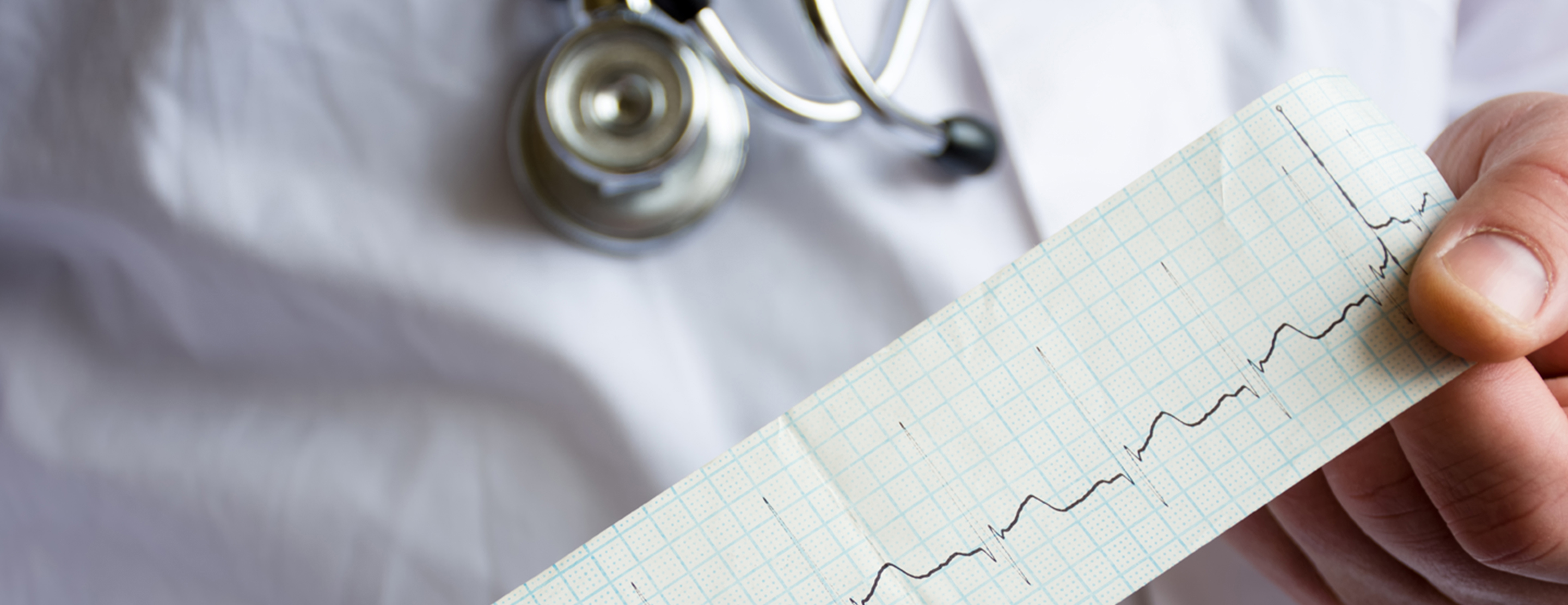
Intracardiac electrophysiology study (EPS)
Definition
Intracardiac electrophysiology study (EPS) is a test to look at how well the heart's electrical signals are working. It is used to evaluate abnormal heartbeats or
Alternative Names
Electrophysiology study - intracardiac; EPS - intracardiac; Abnormal heart rhythms - EPS; Bradycardia - EPS; Tachycardia - EPS; Fibrillation - EPS; Arrhythmia - EPS; Heart block - EPS
How the Test is Performed
Wire electrodes are placed in the heart to do this test. These electrodes measure electrical activity in the heart.
The procedure is done in a hospital laboratory. The staff will include a cardiologist (heart doctor), technicians, and nurses.
To have this study:
- Your groin and/or neck area will be cleaned and numbing medicine (anesthetic) will be applied to the skin.
- The cardiologist will then place several IVs (called sheaths) into your groin or neck area. Once these IVs are in place, wires or electrodes can be passed through the sheaths into your body.
- The doctor uses moving x-ray images (fluoroscopy) to guide the catheter into the heart and place the electrodes in the right places.
- The electrodes pick up the heart's electrical signals.
- Electrical signals from the electrodes may be used to make the heart skip beats or produce an abnormal heart rhythm. This can help the doctor understand more about what is causing the abnormal heart rhythm or where in the heart it is starting.
- You may also be given medicines that may also be used for the same purpose.
Other procedures that may also be done during the test:
- Placement of a heart
pacemaker - Procedure to modify small areas in your heart that may be causing your heart rhythm problems (called
catheter ablation )
How to Prepare for the Test
You will be told not to eat or drink for 6 to 8 hours before the test.
You will wear a hospital gown. You must sign a consent form for the procedure.
Your health care provider will tell you ahead of time if you need to make changes to the medicines you regularly take. Do not stop taking or change any medicines without first talking to your provider.
In most cases, you will be given medicine to help you feel calm before the procedure. The test can last from 1 hour up to several hours. You may not be able to drive home afterward, so you should plan for someone to drive you.
How the Test will Feel
You will be awake during the test. You may feel some discomfort when the IV is placed into your arm. You may also feel some pressure at the site when the catheter is inserted. You may feel your heart skipping beats or racing at times.
Why the Test is Performed
Your provider may order this test if you have signs of an abnormal heart rhythm (
You may need to have other tests before this study is done.
An EPS may be done to:
- Test the function of your heart's electrical system
- Pinpoint a known abnormal heart rhythm (arrhythmia) that is starting in the heart
- Decide the best therapy for an abnormal heart rhythm
- Determine whether you are at risk for future heart events, especially sudden cardiac death
- See if medicine is controlling an abnormal heart rhythm
- See whether you need a pacemaker or
implantable cardioverter-defibrillator (ICD)
What Abnormal Results Mean
Abnormal results may be due to abnormal heart rhythms that are too slow or too fast. These may include:
Atrial fibrillation or flutter- Heart block
Sick sinus syndrome Supraventricular tachycardia (a group of abnormal heart rhythms that start in the upper chambers of the heart)- Ventricular fibrillation and
ventricular tachycardia Wolff-Parkinson-White syndrome
There may be other causes that are not on this list.
The provider must find the location and type of heart rhythm problem in order to determine the proper treatment.
Risks
The procedure is very safe in most cases. Possible risks include:
- Arrhythmias
- Bleeding
- Blood clots that lead to
embolism Cardiac tamponade Heart attack - Infection
- Injury to the vein
Low blood pressure - Stroke
References
Ferreira SW, Mehdirad AA. The electrophysiology laboratory and electrophysiologic procedures. In: Sorajja P, Lim MJ, Kern MJ, eds. Kern's Cardiac Catheterization Handbook. 7th ed. Philadelphia, PA: Elsevier; 2020:chap 7.
Nattel S, Tomaselli GF. Mechanisms of cardiac arrhythmias. In: Libby P, Bonow RO, Mann DL, Tomaselli GF, Bhatt DL, Solomon SD, eds. Braunwald's Heart Disease: A Textbook of Cardiovascular Medicine. 12th ed. Philadelphia, PA: Elsevier; 2022:chap 62.
Olgin JE. Approach to the patient with suspected arrhythmia. In: Goldman L, Cooney KA, eds. Goldman-Cecil Medicine. 27th ed. Philadelphia, PA: Elsevier; 2024:chap 49.
Review Date: 05/08/2024
The information provided herein should not be used during any medical emergency or for the diagnosis or treatment of any medical condition. A licensed physician should be consulted for diagnosis and treatment of any and all medical conditions. Call 911 for all medical emergencies. Links to other sites are provided for information only -- they do not constitute endorsements of those other sites. Copyright ©2019 A.D.A.M., Inc., as modified by University of California San Francisco. Any duplication or distribution of the information contained herein is strictly prohibited.
Information developed by A.D.A.M., Inc. regarding tests and test results may not directly correspond with information provided by UCSF Health. Please discuss with your doctor any questions or concerns you may have.





